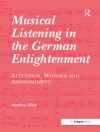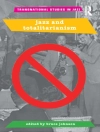Music videos have ranged from simple tableaux of a band playing its instruments to multimillion dollar, high-concept extravaganzas. Born of a sudden expansion in new broadcast channels, music videos continue to exert an enormous influence on popular music. They help to create an artist’s identity, to affect a song’s mood, to determine chart success: the music video has changed our idea of the popular song.
Here at last is a study that treats music video as a distinct multimedia artistic genre, different from film, television, and indeed from the songs they illuminate—and sell. Carol Vernallis describes how verbal, musical, and visual codes combine in music video to create defining representations of race, class, gender, sexuality, and performance. The book explores the complex interactions of narrative, settings, props, costumes, lyrics, and much more. Three chapters contain close analyses of important videos: Madonna’s ‘Cherish, ‘ Prince’s ‘Gett Off, ‘ and Peter Gabriel’s ‘Mercy St.’
Table des matières
Acknowledgements
Introduction
Theory
Telling and Not Telling
Editing
Actors
Settings
Props and Costumes
Interlude: Space, Color, Texture, and Time
Lyrics
Musical Parameters
Connections Among Music, Image, and Lyrics
Analytical Methods
Analyses
The Aesthetics of Music Video: An Analysis of Madonna’s ‘Cherish’
Desire, Opulence, and Musical Authority: The Relation of Music and Image in Prince’s ‘Gett Off’
Peter Gabriel’s Elegy for Anne Sexton: Image and Music in ‘Mercy St.’
Afterword
Notes
Bibliography
Index
A propos de l’auteur
Carol Vernallis is associate professor in the Media Arts and Studies Division of the Communication Department at Wayne State University.












